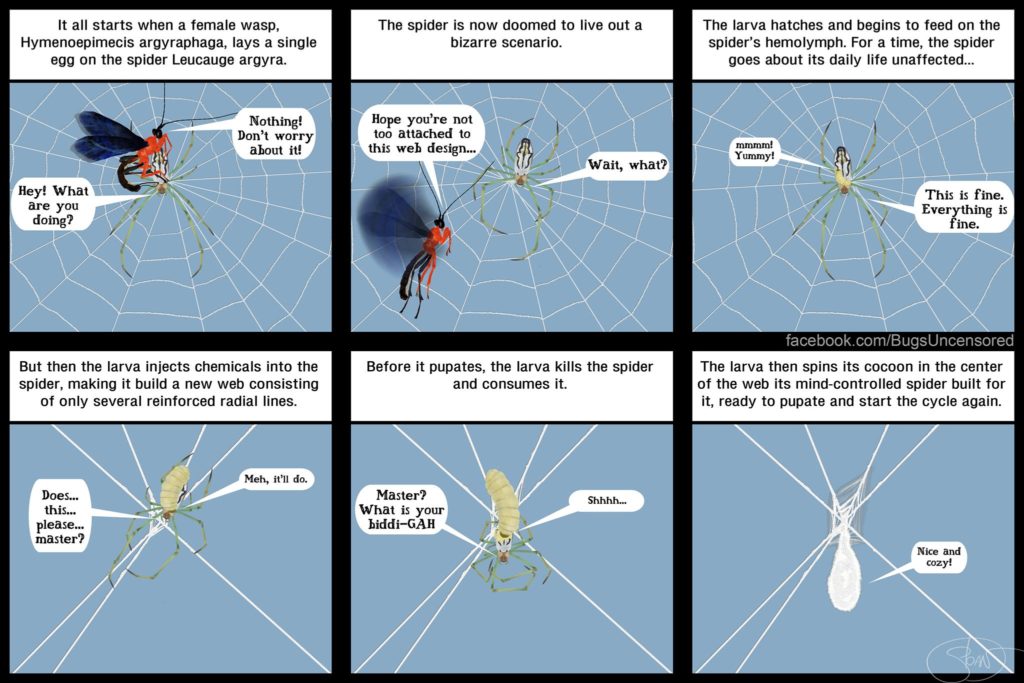Manipulation is a domain that certain parasites have exploited to bizarre degrees. They can literally turn their victim hosts into fully-controlled ‘zombies’ to do their bidding. Call them Frankensteins if you will! Different parasites inject the hosts with highly-specific chemicals or toxins that seem to paralyse them or trigger specific behavioural responses. This they do to either gain essential nutrients, seek nesting quarters or even a ‘vehicle’ to move from one destination to another. Horrifying as it may all sound, these mind-controlling parasitic creatures are fascinating for their ability to control minds of other animals! Introducing some of the many such mind-controllers of the natural world. Read on!
A jewel wasp (Ampulex compressa) female starts by locating a potential host for her larva. The cockroach is her preferred choice of host. She will first inject a toxin into the cockroach which paralyses its fore limbs. Then she aims for its head, and injects a specific toxin that is believed to take effect on the part of the brain that controls movement. Paralysed and immobile, the cockroach is then led by the jewel wasp by its antennae to her lair underground. She then lays her egg on the body of the cockroach. Her work here is done. She takes off having ensured that her to-be born progeny’s needs and safety are met. Her larva soon hatches, then feeds on the cockroach’s flesh for a few days, and then pupates within the partially consumed host’s body. After about a month, the wasp is now an adult and ready to leave the burrow and the carcass of the cockroach behind.
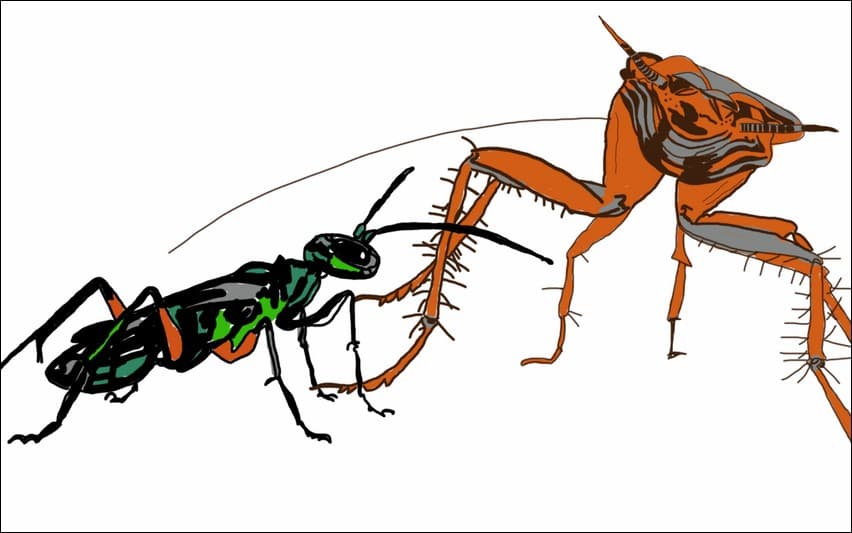
A female jewel wasp paralyses a cockroach to lay her egg in. Illustration: Sara Mahdi.
Hairworms are elaborate manipulators. They begin their lives in water streams and rivers as eggs, and upon hatching into small larvae, they invariably get eaten by various insects such as mayflies. But, a mayfly is only a pawn in this long game of manipulation. It acts as an intermediate host for the hairworm larva which burrows itself into the flesh of the mayfly and waits. Sooner or later, the mayfly finds its way on to terra firma, where a cricket makes a meal of it. And it is a cricket which the hairworm larva has been seeking all along. Once inside a cricket, the worm’s development resumes and it grows and grows for about a month, siphoning off the crickets energy sources such as lipids. The hairworm ensures its own safety by making the cricket host take all measures to conserve energy, remain healthy and stay alive.
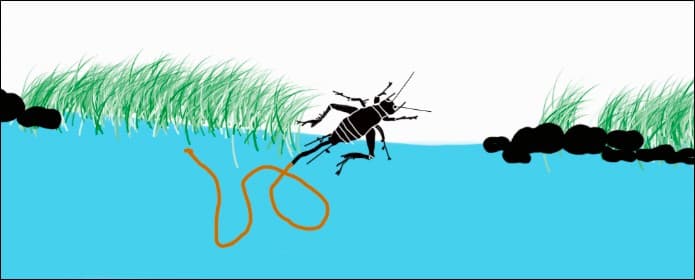
The cricket is ‘programmed’ to land in water by the hairworm growing inside it. Illustration: Sara Mahdi.
The infected crickets, it is known even stop chirping to attract mates and announce themselves as competitors to the other males around. The hairworm executes a chilling endgame upon reaching adulthood. The adult hairworm needs to make its way back to a water source to reproduce. It ‘programs’ the cricket, a terrestrial insect, into venturing towards a water body and jumping into it. The cricket is basically programmed to commit suicide! As soon as the cricket hits the water, the adult hairworm, about 1 to 2 feet. long nearly bursts out of the cricket’s body and shakes vigorously to detach itself from its drowning host. Here, in the water, it mates and reproduces. And the cycle continues. Phew.
The Costa Rican wasp (Hymenoepimecis argyraphaga) manipulates its host, an unsuspecting orb spider, to do its bidding through various stages of its life. A female Costa Rican wasp lays her eggs on various individuals of a specific orb spider species, the Leucauge argyra. After several weeks of hitching a ride on the abdomen of the orb spider, the wasp larva proceeds to inject the spider with a special chemical. Special because it controls the spider’s mind enough to carry out specific set of tasks. The spider builds a web, very different from the one it would ordinarily build for itself. This strange web will serve its purpose of supporting the cocoon which the larva will build when it is time to pupate. But, first it will feed on the spider eventually killing it, before using the web the spider built for it. That is cold.
This comic by Sloan Tomlinson beautifully illustrates the phenomenon of Costa Rican wasp parasitising the orb spider and controlling its behaviour. Click on the image to enlarge.
The lancet liver fluke (Dicrocoelium dendriticum) executes an extraordinary lifecycle. This flatworm goes through its entire life oscillating between different hosts. An adult liver fluke lives and reproduces inside the bile duct of a grazing animal such as cattle or sheep.
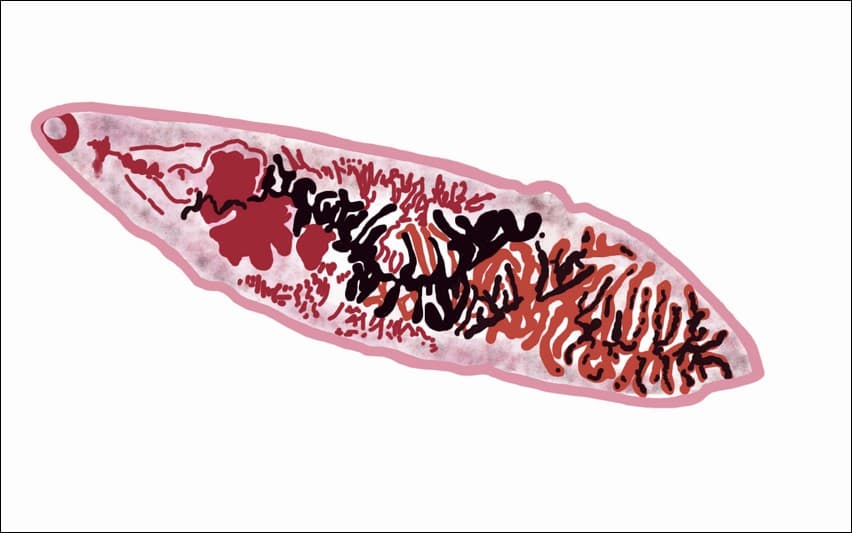
A lancet liver fluke is a parasitic flatworm. Illustration: Sara Mahdi.
The eggs it lays are excreted along with the animal’s faeces. And thus, its life cycle begins. These eggs along with the other waste are consumed by snails – the flatworm’s first host. The eggs settle inside the snail’s gut, and here the larvae hatch. These larvae are enveloped in cyst-like coatings and make their way out of the snail’s body in a slime ball that is coughed out. Ants feed on these mucous balls and end up ingesting the parasitic flatworms. Some of these ingested parasites lodge within the ant’s brain, while others enter the abdomen.
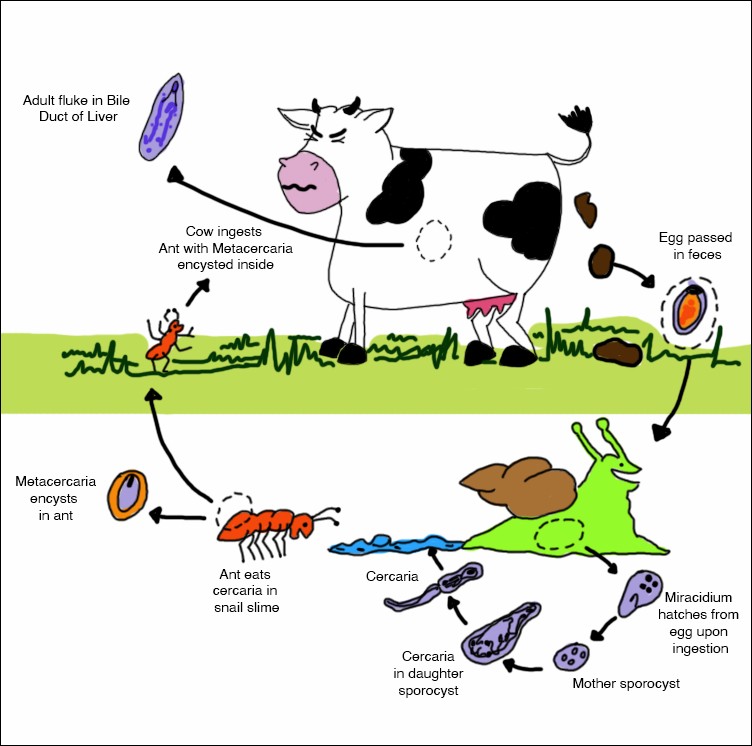
The lancet liver fluke pulls off an elaborate life cycle oscillating between multiple hosts with precision. Illustration: Sara Mahdi.
The flatworms are now in control of the ant’s behaviour. At dusk, the disoriented ant finds itself climbing grass blades and perching itself right at the top waiting for a passing herbivore to feed on those grass blades along with it. This behaviour continues, everyday, till the ant is consumed by a grazing herbivore. And voila! The parasite winds up exactly where it wanted to be, the herbivore’s bile duct where it matures and reproduces, setting the stage for the next generation of flatworms to parasitise their way through multiple hosts using tactful deceit and manipulation. Fascinating!
——————————————————————————————————————————————————————
About the Author: Purva Variyar is a conservation and science writer at the Wildlife Conservation Trust, India.
Illustrations by Sara Mahdi. Comic by Sloan Tomlinson
Disclaimer: The author is associated with Wildlife Conservation Trust. The views and opinions expressed in the article are her own and do not necessarily reflect the views and opinions of Wildlife Conservation Trust.
——————————————————————————————————————————————————————
Your donations support our on-ground operations, helping us meet our conservation goals.
——————————————————————————————————————————————————————
Related Links
- Quadripartite Association
- Giving a Fig About Wasps, Fig Trees and Climate Change
- Ecological Connectivity in the Age of Economic Corridors
- In Praise of Spider Silk
- Kanhargaon is state’s 50th wildlife sanctuary

